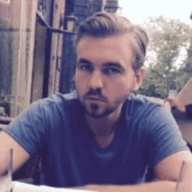Rubella is an infection that was misunderstood for much of its history. It was initially thought to be a type of measles. In the early part of the 19th century, is was first recognized as a disease unto itself, a distinction that occurred in Germany, hence the term “German measles,” as rubella would come to be commonly known. For children and adults, the symptoms of rubella are not particularly serious, with 25% to 50% of people infected not experiencing any symptoms at all. But the effects to the fetus of a mother with the illness, called congenital rubella syndrome (CRS), are far more severe.
CRS can lead to deafness, blindness, heart disease, and more. It was first described in medical literature in 1941. Over the next three decades, rubella outbreaks around the world would cause spikes in CRS. This led to miscarriages, stillbirths, and infants born with birth defects. As the number of complications related to CRS grew, so did the galvanization of the medical community. Work began to eliminate CRS by preventing rubella altogether. The first vaccine was licensed in 1969.
The CRS community is still engaged in trying to raise awareness and drive education. Because the number of potential complications from CRS is so vast, the experiences of individual community members vary. They can exchange tips for dealing with symptoms, and provide support, but another major function of the groups is collaborating on the best ways to communicate with medical professionals.
According to Janet Lee, who has dealt with complications from CRS her entire life, “We try to help [CRS survivors] bring it up to their doctor or medical health professional—educate them to keep bringing awareness. We never let people stop at this. We tell them to do as much as you can. You have a voice, we have voice, and you have to speak up for yourself.”
Members of the CRS community have to be their own advocates, because they are often forgotten. Without a foundation to work with legislators and pharmaceutical companies on their behalf, survivors rely on grass-roots communities and informal networks to build support and find treatment for the myriad of defects that come with the disease. They build hope and remain fiercely self-sufficient. While these communities don’t express an opinion on outside issues, one cause they are passionate about is proper vaccination.
During the last major rubella epidemic in the United States from 1964 to 1965, an estimated 12.5 million people got rubella, 11,000 pregnant women lost their babies, 2,100 newborns died, and 20,000 babies were born with CRS, but the creation of a vaccination ensured that rubella could be eliminated and such a tragedy would never have to happen again. Rubella was eliminated in the United States in 2004, but new cases have since shown up.
Jamie Todd, an author whose mother contracted rubella when she was three months pregnant says, “We don’t want to see a whole new generation of Congenital Rubella Syndrome Survivors, but unfortunately, we are, as adults and children are not being vaccinated like they should be. There not only needs to be education among the public, but among the medical and scientific communities.”
The community of survivors does not get enough attention. TREND is committed to shining a light on the CRS community, while helping members of that community perform outreach and inform people around the world.

